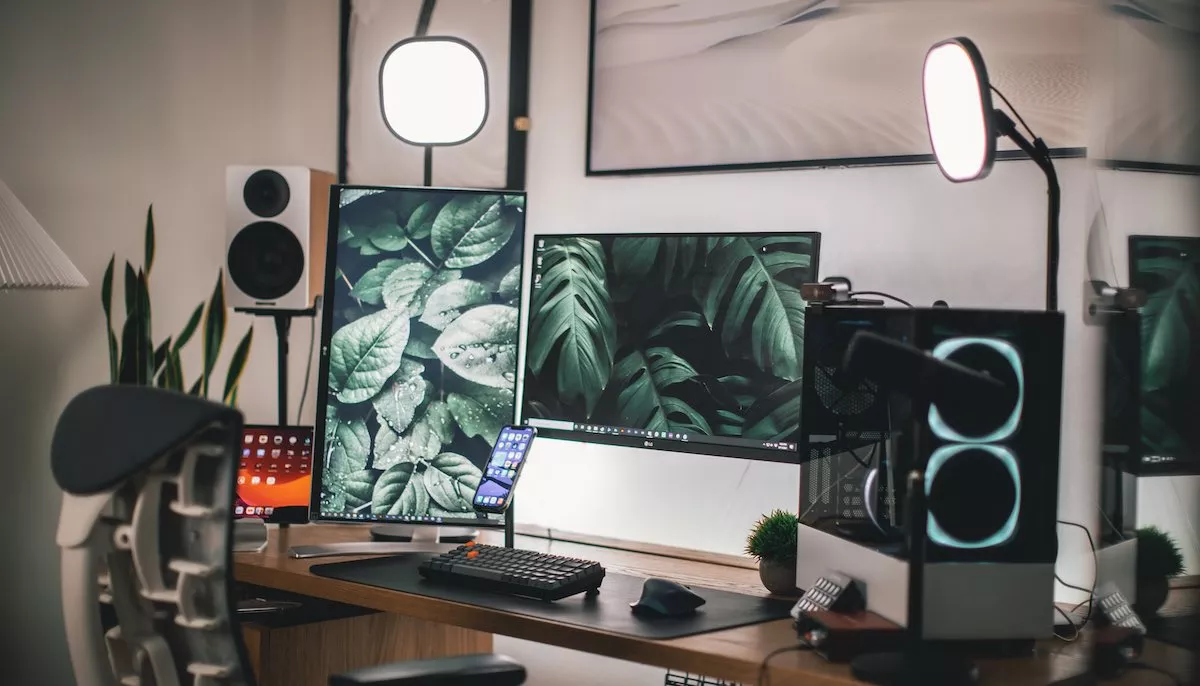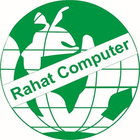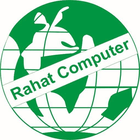How To Optimize A Desktop Computer For Productivity?

In a world where time is of the essence, optimizing your desktop computer for productivity is essential. Whether you’re a work-from-home professional, a student, or simply looking to make the most out of your time, knowing how to fine-tune your computer for maximum efficiency can make a world of difference. From decluttering your desktop to streamlining your workflow, there are numerous ways to transform your computer into a productivity powerhouse. In this article, we will explore the top tips and tricks for optimizing your desktop computer to help you work smarter, not harder.
Related: Buy Best Desktops in Oman
Optimizing Desktop Computer Settings for Enhanced Productivity
Enhancing productivity on a desktop computer involves optimizing various settings to create an efficient and streamlined work environment. By making a few adjustments, you can greatly improve your productivity and focus, allowing you to accomplish tasks more quickly and effectively. Here are some key tips and tricks to optimize your desktop computer settings:
- Adjust Display Settings: Start by adjusting your display settings to ensure optimal visibility and reduce eye strain. Increase the font size and adjust the brightness and contrast levels to create a comfortable viewing experience.
- Organize Your Desktop: A cluttered desktop can hinder productivity and make it difficult to find the files you need. Take the time to organize your desktop by creating folders and categorizing your files. Utilize shortcuts and remove unnecessary icons to keep your desktop clean and organized.
- Utilize Multiple Desktops: Take advantage of the multiple desktop feature available on most operating systems. This allows you to create separate workspaces for different tasks, keeping your workflow organized and reducing distractions. Use one desktop for email and communication, another for creative tasks, and another for research, for example.
Additionally, optimizing your desktop computer for productivity involves managing your applications and system settings:
- Disable Unnecessary Startup Programs: Many applications launch automatically when you start your computer, which can slow down the boot process. Disable unnecessary startup programs to reduce the time it takes for your computer to start up and improve overall performance.
- Manage System Updates: Regularly check for system updates and install them promptly. These updates often include security patches and performance improvements, ensuring your computer runs smoothly and efficiently.
| Application | Function | Shortcut |
|---|---|---|
| Microsoft Word | Word Processing | Ctrl + N |
| Google Chrome | Web Browsing | Ctrl + T |
| Adobe Photoshop | Image Editing | Ctrl + S |
By implementing these optimizations and utilizing the features available on your desktop computer, you can create an environment that promotes productivity and efficiency. Experiment with different settings and workflows to find what works best for you, and enjoy a more productive work experience.
Boosting Performance and Speed for Efficient Work
In today’s fast-paced digital world, optimizing your desktop computer for productivity is essential to stay ahead of the game. By boosting performance and speed, you can ensure efficient work and maximize your output. Here are some tips and tricks to optimize your desktop computer and enhance productivity:
1. Clear out unnecessary files: Start by decluttering your computer’s storage. Delete any unused applications, files, and folders that are taking up valuable space. This will not only free up storage but also improve your computer’s overall performance.
2. Upgrade your hardware: Consider upgrading your computer’s hardware components to boost its speed and performance. Add more RAM to handle multiple tasks simultaneously, upgrade your processor for faster processing speed, and invest in a solid-state drive (SSD) for quicker data access.
3. Optimize your startup programs: Take control of your computer’s startup programs. Disable unnecessary applications from running automatically when you turn on your computer. This will help your computer start up faster and allocate resources more efficiently.
4. Regularly update software: Keep your operating system and software up to date. Regular updates often include performance enhancements, bug fixes, and security patches. Set your computer to automatically install updates to ensure you’re always working with the latest and most optimized versions.
5. Manage your browser extensions: Browser extensions can be useful, but having too many can slow down your browsing experience. Disable or remove any unnecessary extensions to improve your browser’s speed and responsiveness.
6. Use a reliable antivirus software: Protect your computer from malware and viruses that can slow down its performance. Install a trusted antivirus software and regularly scan your system for any potential threats.
7. Optimize your browser settings: Adjust your browser settings to optimize performance. Clear your cache regularly, disable auto-playing videos, and enable pop-up blockers. These small adjustments can significantly improve your browsing speed and efficiency.
Remember, optimizing your desktop computer is an ongoing process. Regular maintenance, updates, and tweaks will ensure that your computer is running at its best, allowing you to work efficiently and boost your productivity.
Organizing Your Desktop for a Streamlined Workflow
One of the keys to being productive on your desktop computer is to have an organized and clutter-free workspace. This not only helps to streamline your workflow but also allows you to find files and applications quickly and efficiently. To optimize your desktop computer for productivity, here are some tips on how to organize your desktop for a streamlined workflow.
1. Declutter Your Desktop: Start by removing any unnecessary icons or files from your desktop. Sort through them and decide which ones you need to keep and which ones you can delete or store in a more appropriate location. By decluttering your desktop, you’ll be able to focus on the tasks at hand without distractions.
2. Create Folders and Categories: Organize your files and applications into folders and categories that make sense to you. This could be by project, client, or type of file. By grouping similar items together, you’ll be able to find what you need more quickly. Use descriptive names for your folders and consider using subfolders to further organize your files.
In addition to these tips, consider using shortcuts and keyboard commands to navigate your desktop more efficiently. Utilize the search function to locate files and applications instead of manually browsing through folders. Remember, an organized desktop leads to a more productive and stress-free work environment. So take the time to optimize your desktop computer and reap the benefits of a streamlined workflow.
Customizing Software and Tools for Maximum Productivity
One of the most effective ways to enhance productivity on a desktop computer is by customizing software and tools to suit your specific needs. By tailoring your computer’s setup to optimize efficiency, you can save time, eliminate distractions, and streamline your workflow. Here are some tips and tricks to help you get the most out of your desktop computer and boost your productivity to new heights.
1. Customize your desktop layout: Take advantage of the flexibility of your operating system to arrange icons, shortcuts, and widgets in a way that makes sense to you. Organize your desktop with folders and subfolders to keep files easily accessible and minimize clutter. Consider using virtual desktops to separate different projects or tasks, allowing you to switch between them seamlessly.
2. Utilize keyboard shortcuts: Learning and utilizing keyboard shortcuts can significantly improve your productivity. Instead of navigating through menus and options with a mouse, use shortcuts to perform common actions quickly. Whether it’s copying and pasting, opening applications, or switching between windows, using keyboard shortcuts can save you valuable time and reduce the strain on your hands and wrists.
3. Automate repetitive tasks: Identify tasks that you frequently perform and find ways to automate them. Take advantage of software features, such as macros or automation tools, to create scripts that can execute a series of actions with a single command. This can be especially useful for tasks like data entry, file renaming, or batch image processing.
4. Customize your software preferences: Many software applications allow you to customize their settings to suit your workflow. Take the time to explore the preferences or settings menus of your most frequently used programs and adjust them to your liking. Whether it’s changing the default font in a word processor or customizing the interface of a graphic design tool, tailoring the software to your preferences can enhance your productivity and make your work more enjoyable.
By customizing your desktop computer’s software and tools, you can create an environment that is perfectly suited to your unique needs and working style. Don’t be afraid to experiment and try out different settings and configurations to find what works best for you. With a little bit of customization, you can transform your desktop computer into a productivity powerhouse.
In Retrospect
In conclusion, optimizing your desktop computer for productivity can significantly improve your efficiency and workflow. By following the tips mentioned in this article, you can create an ideal work environment that allows you to focus and accomplish your tasks with ease. Remember, regular maintenance and organization are key to keeping your desktop computer running smoothly and maximizing its potential for productivity. With the right mindset and tools, you can transform your desktop computer into a powerful tool that helps you achieve your goals and excel in your work. Here’s to a more productive and efficient workday!



